Slides
|
Nick Evans, Dineke Schokkin, and I presented our work in reconstructing the phoneme inventory of proto-Pahoturi River. This presentation focused on the reconstruction of the liquids. Although there are at most three liquids in each PR language, there are five distinct correspondence sets across the family.
Slides What a thrill to defend my dissertation in front of so many of my advisors, friends, and family! Abstract: In this work, I expand Zoll’s (1996) analysis of subsegmental phenomena to address the fact that her uniform treatment of ghost elements cannot account for a key behavioral property: the default realizational state of the ghost element (Zimmermann 2018). This property subclassifies ghost elements into two groups: those that are preferentially realized unless they violate markedness and those that are preferentially deleted unless they repair markedness. I call these martyr and hero ghosts, respectively. In Optimality Theory, presence and absence of phonological elements in the output is regulated by ranked and violable constraints. If a constraint that penalizes non-realization of a phonological element is ranked higher than a constraint that penalizes realization, then the optimal output will not include the element. This is the necessary constraint ranking for a ghost element that exhibits martyr-type behavior. The opposite ranking generates hero-type behavior. If ghost elements are represented uniformly as subsegments as Zoll (1996) proposes, then we predict only two types of languages: one in which all ghost elements are martyrs and one in which all ghost elements are heroes. This theoretical typology undergenerates the empirically observed typology of phonological patterns. Ende (Pahoturi River) exhibits two types of ghost elements: floating nasals, a martyr ghost, and infinitival reduplication, a hero ghost. I propose a representational distinction that splits ghost elements into two subsegmental types: those that are specified for their melodic features and those that are specified for their skeletal or structural features. This engenders faithfulness constraints which can be ranked with respect to one another to indicate a language’s preference to realize or not realize melodic or skeletal subsegments, predicting four types of languages, including Ende. This work provides analyses of both ghost elements in Ende and other languages with multiple ghost elements, including Chaha, Yowlumne, and Welsh. I also provide the first descriptive analyses of the phonotactics, phonology, and morphology of Ende and introduce the basic typological profile for the language and the language family. I had a lovely time at PHREND (PHonology Research weekEND) 2019, which was held at UC Berkeley this year. I presented the briefest of snapshots of my dissertation work and enjoyed hearing more about the development of Q Theory in Panãra (Myriam Lapierre, Martha Schwarz, Karee Garvin, Sharon Inkelas) and catching up with Emily Grabowski and learning about tone in Coatlán-Loxicha Zapotec. Cherry on the top of this conference was catching a beautiful sunset over the city and both bay bridges from Larry Hyman's gorgeous home in the Berkeley hills. Ghost elements in Ende phonology
Kate L. Lindsey (Stanford University) Ende phonology exhibits several phenomena where partially underspecified segments seem to appear and disappear at the service of phonotactics, much like yers in Slavic. Following Zoll (1996) and Kiparsky (2003), I call such elements ghosts. I will present two types of ghosts in Ende and show how the interaction of these two patterns informs formal theories on the representation of underspecification in the input. Ende floating nasals demonstrate alignment of an underspecified nasal segment to the leftmost non-initial obstruent in the word, much like how stress and affixes may be aligned to left or right edges of stems or feet (McCarthy & Prince 1993) or how tone patterns may spread to adjacent tone-bearing units. A phonotactic analysis of the Ende dictionary and corpus reveals that prenasalization is a contrastive feature of morphemes, much like nasalization in Máíhɨ̃ki (Sylak-Glassman 2013). Ende phonotactic reduplication displays semantically vacuous copying of segmental structure to repair verb roots that violate a phonotactic constraint on word minimality. Monosyllabic verb roots reduplicate in isolated forms, but multisyllabic verb roots do not. Curiously, morphological structure also seems to play a role. Representing both ghost elements as subsegments in the input allows for straightforward constraint-based analyses of the phenomena independently. However, when the two ghost patterns co-occur in the same word, a ranking paradox arises. This puzzle is solved if the two types of ghost elements are represented distinctly in the input. Is Ende reduplication phonological copying or morphological doubling? Ende infinitival verbs are an interesting puzzle for the Dual Theory of reduplication (Inkelas 2008), which distinguishes phonological and morphological doubling as formally and functionally distinct phenomena. In Ende, infinitival reduplication is sensitive to phonological structure (monosyllabic verb roots reduplicate, multisyllabic verb roots do not reduplicate) and to morphological structure (monomorphemic verb roots reduplicate, multimorphemic verb roots do not). The shape of the reduplicant may be phonologically-determined (CV template, TETU patterns) or morphologically-determined (total reduplication, no TETU patterns). In this talk, I will contrast the two potential analyses, showing that neither a strictly phonological nor a strictly morphological analysis can account for all the data, and suggest an alternative mixed approach. Inkelas, S. (2008). The dual theory of reduplication. Linguistics, 46, 351–402. CLICK THIS POST TO SEE HANDOUT Thrilled to share the news that I just accepted a position in Boston University's Department of Linguistics for this Fallǃ I will be teaching phonology and fieldwork and continuing my research in southern Papua New Guinea, hopefully with some BU graduate students joining in on the fun. I'm so grateful for all the support from my friends and family this past year <3
Had a great experience presenting my data on Phonotactic Reduplication in Ende at the Annual Meeting on Phonology in San Diego! I was happy to have such an engaged audience during my poster session, which I think will really improve how this work fits into my dissertation. So happy to give a talk on Ende phonology at the Australian Linguistics Society's 50th annual conference! The talk went really well and I got to showcase a lot of new data from my 2017 fieldtrip. This will be the fourth chapter of my dissertation. The abstract and slides are included below
On May 19th, I gave a talk titled “Verbal Reduplication in Ende” at the 3rd annual Northwest Phonetics and Phonology Conference. The data presented in this talk were collected in 2015 and 2016 and the proposed analysis for the three reduplication patterns is part of my dissertation proposal. I got some great feedback and stayed with my friend Oksana, whom I met in 2011 at the LSA Institute in Boulder. I’ve attached the slides below.
Today, I received the wonderful news that my proposal to continue research on the phonology and morphology of the Ende verb was accepted by the Stanford Vice Provost for Education Diversity Dissertaiton Research Opportunity fund. This grant will support travel and equipment fees related to my dissertation.
I learned today that the Stanford Graduate Research Opportunity fund accepted my proposal to continue field research on the phonology and morphology of the Ende verb. Their generous support will support travel and equipment fees related to my dissertation.
This year, I was very happy to be assigned as the teaching assistant for LING-110, Introduction to Phonology, taught by Arto Anttila. This was a very fun class to teach - the students were incredibly engaged with the material. Even in the second week, so many students were attending my office hours that I had to turn them into a weekly session to not only review key points of the textbook (Introductory Phonology by Bruce Hayes) but to cover many exciting topics that didn’t fit into our two weekly class periods. I very happily taught two class lectures on stress and syllable weight. In these lectures, I tried out a new way of interacting with the class - I asked for anonymous feedback throughout the lecture that monitored comprehension and engagement, automatically populating a graph on the screen. Within seconds, I could determine how many students had done the reading or the homework, without any student having to publicly admit to being behind. This allowed me to tailor the lecture to the class. I also used this tool to gather data for discussion, for example students could submit topics to a live-updating word cloud for discussion in small groups. You can see these strategies in the lecture recording below.
I was very excited to be able to present my work on Sonority-Driven Stress in Chuvash at the Annual Meeting of Phonology in Vancouver! I saw some great talks; I particularly enjoyed Ellen Kaisse's plenary talk on postlexical processes and Arto Anttila's talk on meter across genres. I was also looking forward to meeting Shu-Hao Shih, who presented a poster titled "Sonority-driven stress does not exist." Now there's a poster title! It was fun discussing sonority in Gujarati with Shu-Hao, especially as it made my talk the next day a bit more interactive for the audience. All in all, a wonderful experience! AbstractHandout |
AuthorKate Lynn Lindsey Archives
March 2022
Categories
All
|
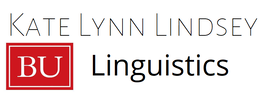
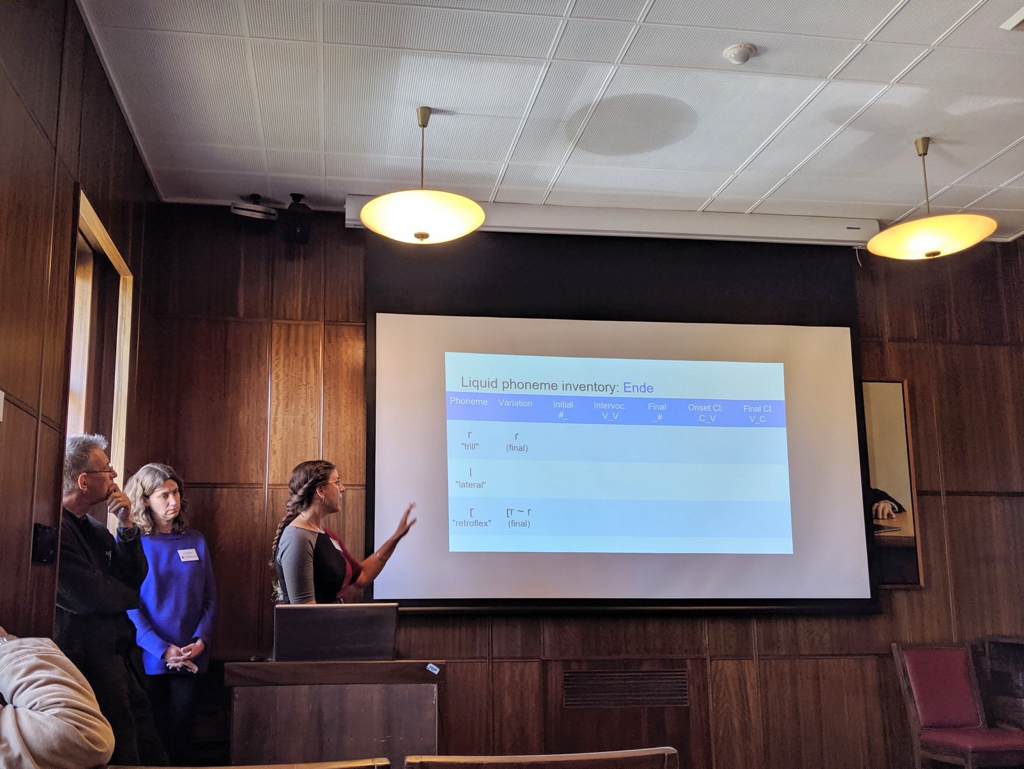
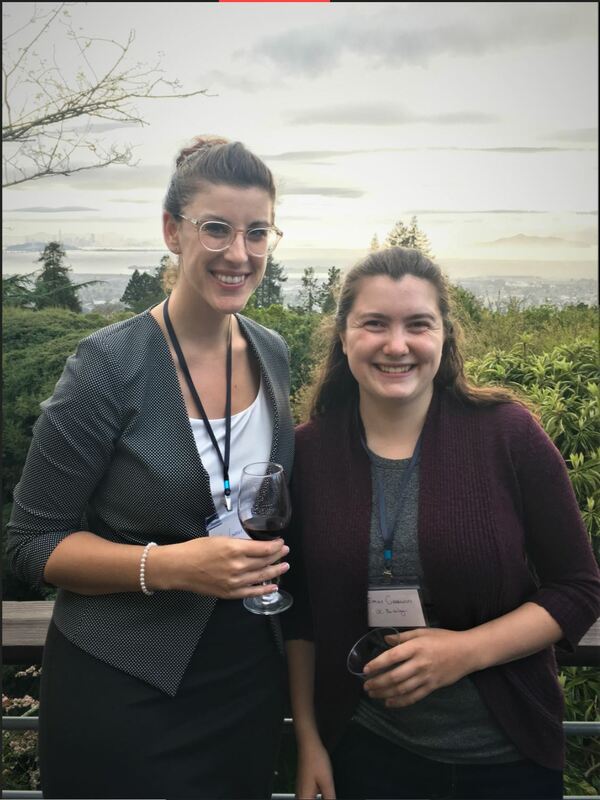
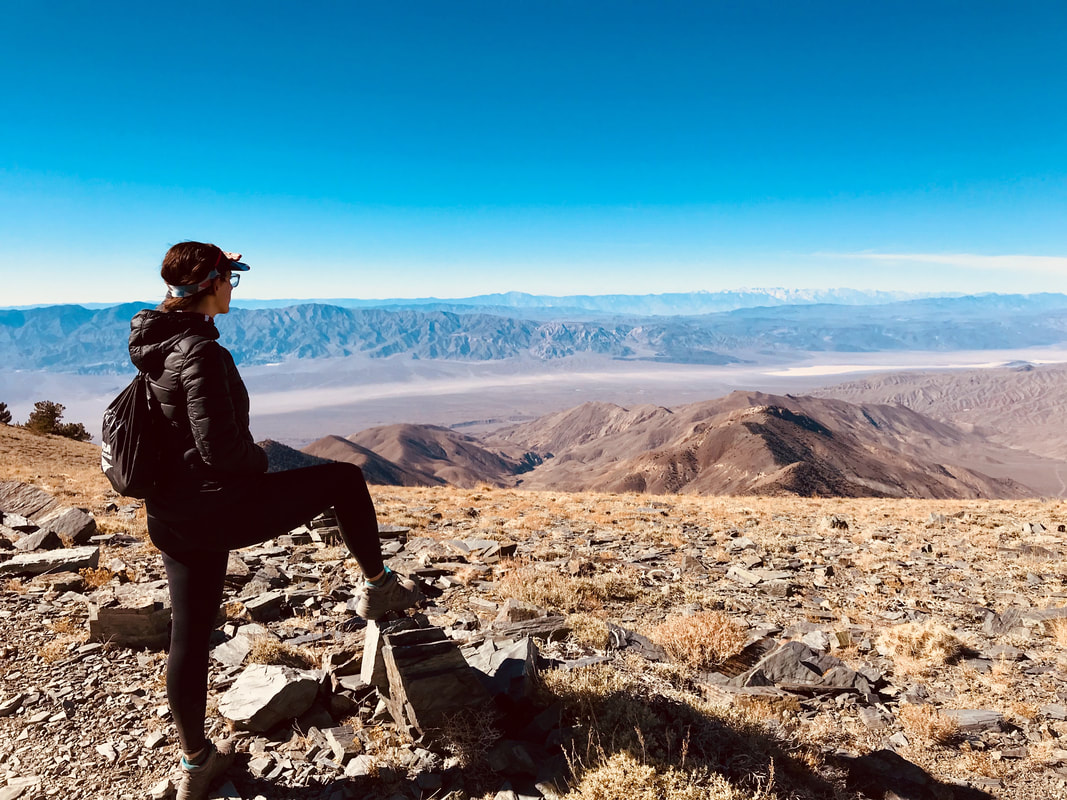
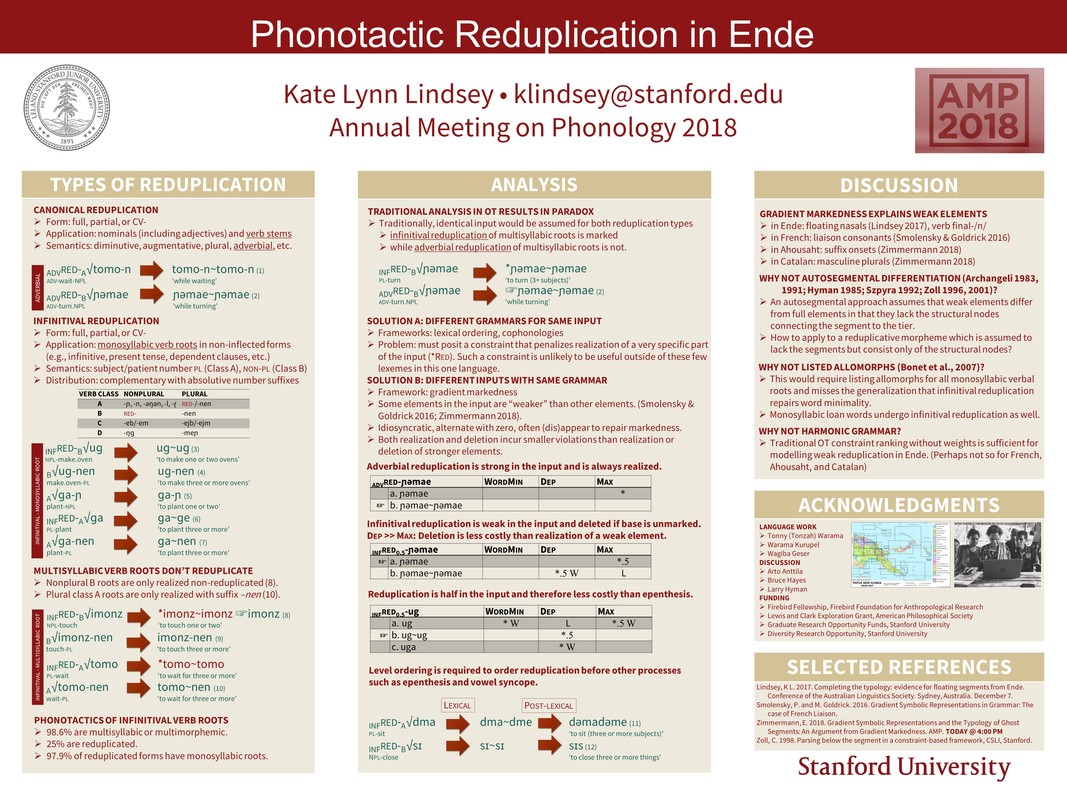
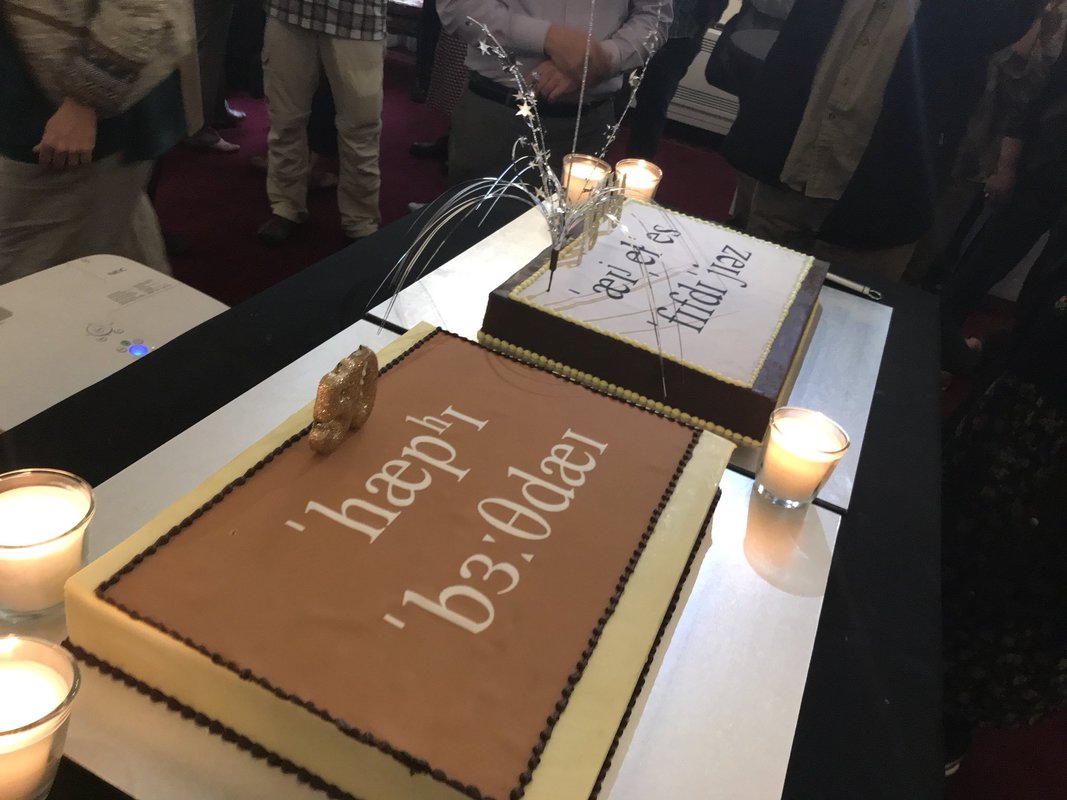
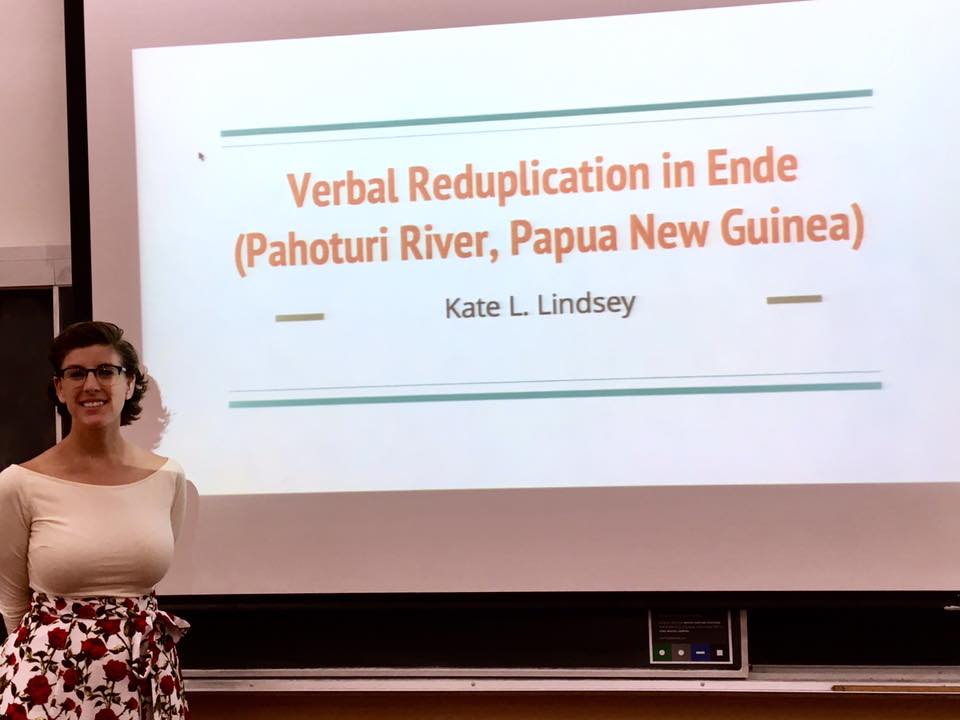


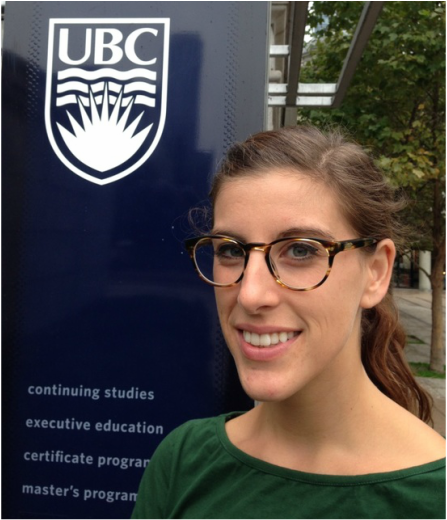
 RSS Feed
RSS Feed
